Find Help
More Items From Ergsy search
-
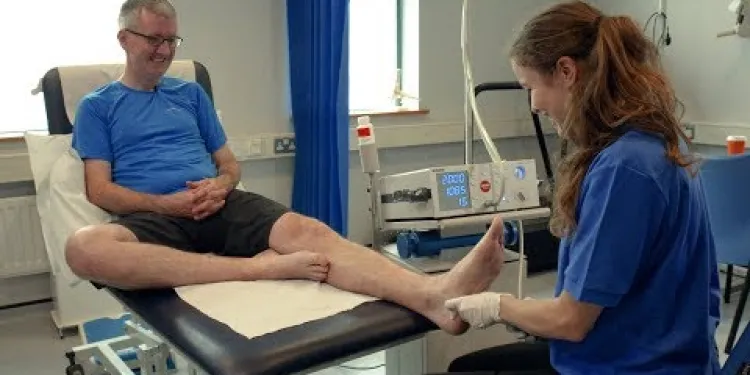
Plantar fasciitis
Relevance: 100%
-
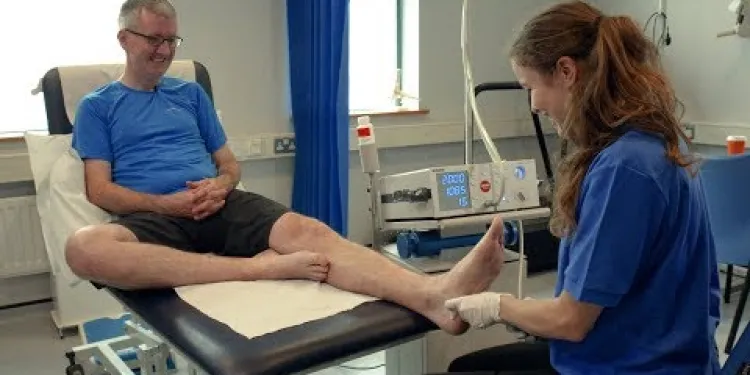
Plantar fasciitis
Relevance: 99%
-
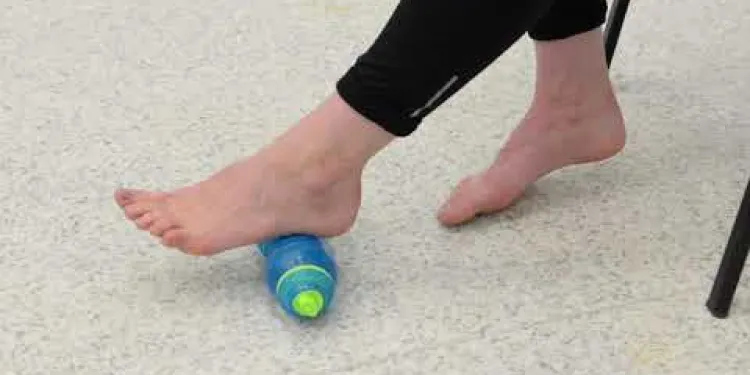
Plantar Fascia Cold Therapy
Relevance: 65%
-
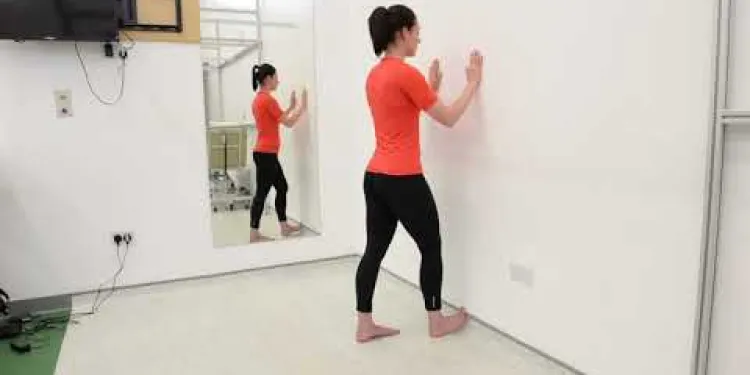
Plantar Fascia Wall Stretch
Relevance: 62%
-
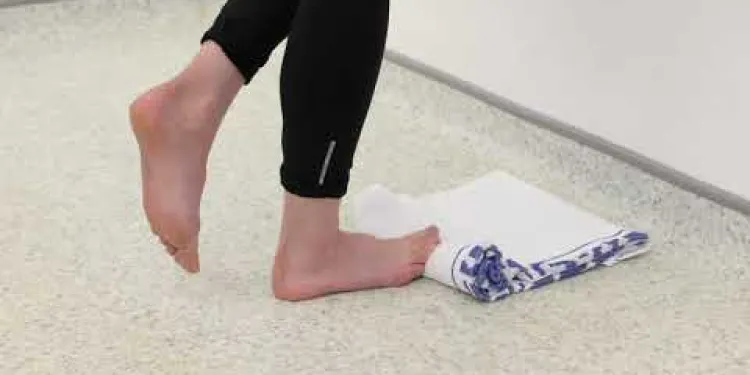
Plantar Fascia Loading Exercise (High Load Exercise)
Relevance: 60%
-
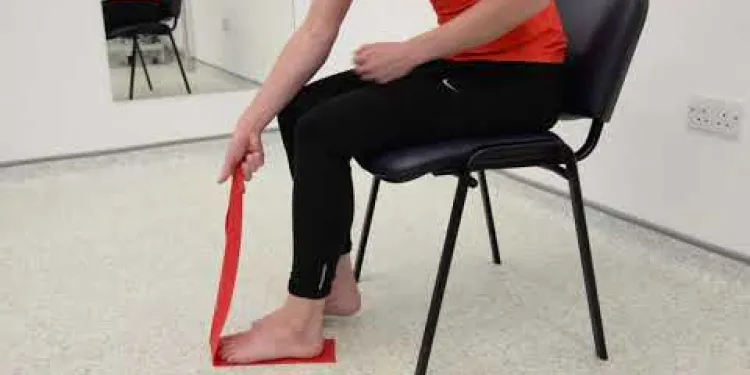
Plantar Fascia Intrinsic Theraband Strengthening Exercise
Relevance: 58%
-

Heel pain | NHS
Relevance: 35%
-
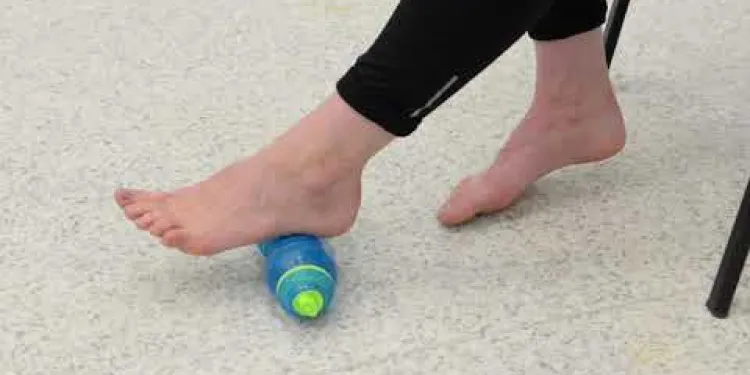
Foot Pain
Relevance: 29%
-
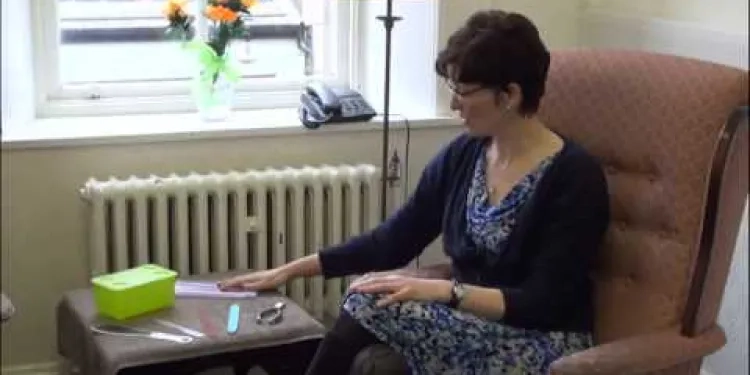
Podiatrist Personal Footcare
Relevance: 13%
-

NHS Looking after your feet - Podiatrist https://youtu.be/8J1v6K21ykc
Relevance: 12%
Understanding Plantar Fasciitis
What is Plantar Fasciitis?
Plantar fasciitis is a common musculoskeletal condition that affects the heel of the foot, causing sharp pain and discomfort. It occurs when the plantar fascia, a thick band of tissue running across the bottom of the foot, becomes inflamed. This tissue connects the heel bone to the toes and supports the arch of the foot, making it essential for proper foot mechanics.
Causes and Risk Factors
The condition is often caused by repetitive strain and stress on the plantar fascia. Factors contributing to plant fasciitis include prolonged standing, high-impact exercises, improper footwear, and flat feet or high arches. In the UK, people who spend long hours on their feet, such as teachers, nurses, and retail workers, are particularly susceptible.
Symptoms
Individuals with plantar fasciitis typically experience stabbing pain at the bottom of the heel, particularly in the morning or after long periods of inactivity. The pain often subsides with movement but may return after prolonged standing or exercise. In severe cases, the discomfort can interfere with daily activities and overall quality of life.
Treatment Options
Treatment for plantar fasciitis in the UK generally focuses on relieving pain and inflammation. Initial self-care measures include rest, ice application, and over-the-counter pain relievers such as ibuprofen or paracetamol. Stretching exercises targeting the calf muscles and Achilles tendon can also help alleviate symptoms.
Professional Interventions
If these measures prove ineffective, healthcare providers might recommend physical therapy, custom orthotics, or night splints to maintain the foot in a stretched position overnight. Additionally, corticosteroid injections can offer temporary relief. In rare cases, surgical intervention might be considered to release tension in the plantar fascia.
Preventive Measures
Preventing plantar fasciitis involves maintaining a healthy weight, choosing appropriate footwear with good arch support, and incorporating foot and calf stretching exercises into daily routines. For those in the UK with occupations requiring prolonged standing, taking breaks and alternating between standing and sitting can mitigate the risk of developing plantar fasciitis.
Conclusion
Plantar fasciitis is a manageable condition with appropriate care and preventive measures. By understanding the causes, symptoms, and treatment options available in the UK, individuals can take proactive steps to alleviate pain and improve foot health. If symptoms persist, seeking medical advice is crucial for a tailored treatment plan.
Understanding Plantar Fasciitis
What is Plantar Fasciitis?
Plantar fasciitis is when your heel hurts a lot. This happens because a band of tissue on the bottom of your foot gets sore. This tissue helps you walk properly.
Causes and Risk Factors
Plantar fasciitis can happen if you use your feet too much. Things like standing for a long time, not wearing good shoes, or having flat or very high arches can cause it. People like teachers, nurses, and shop workers often get it because they stand a lot.
Symptoms
If you have plantar fasciitis, your heel hurts when you get out of bed or after sitting for a long time. The pain may go away when you walk but could come back later. Sometimes, the pain can make it hard to do everyday things.
Treatment Options
To help your heel feel better, you can rest and put ice on it. You can also take pain pills like ibuprofen or paracetamol. Doing special exercises to stretch your leg muscles can also help.
Professional Interventions
If your heel still hurts, doctors may suggest other treatments. These can include physical therapy, special shoe inserts, or wearing a splint at night. Sometimes, they may give you medicine shots to stop the pain. Surgery is very rare but may be done if nothing else works.
Preventive Measures
To stop plantar fasciitis from happening, keep a healthy weight, wear good shoes, and do stretching exercises for your feet and legs. If you stand a lot for work, try to take breaks and sit down sometimes.
Conclusion
You can manage plantar fasciitis with the right care. Know what causes it and how to treat it. If it keeps hurting, see a doctor for help.
Frequently Asked Questions
What is plantar fasciitis?
Plantar fasciitis is a common condition that causes pain in the heel and bottom of the foot, due to inflammation of the plantar fascia, the thick band of tissue that connects the heel bone to the toes.
What are the symptoms of plantar fasciitis?
The main symptom is pain and stiffness in the bottom of the heel, which is often worse with the first steps in the morning or after long periods of rest.
Who is at risk of developing plantar fasciitis?
Risk factors include age (40-60 years), activities that put stress on the heel, obesity, and having a high arch or flat feet.
How is plantar fasciitis diagnosed?
A healthcare provider typically diagnoses plantar fasciitis based on medical history and a physical examination. Imaging tests like X-rays or MRI may be used to rule out other conditions.
What are the treatment options for plantar fasciitis?
Treatment options include rest, ice, pain relievers, physical therapy, orthotics, splints, and in severe cases, injections or surgery.
Can plantar fasciitis be prevented?
Prevention methods include maintaining a healthy weight, wearing supportive shoes, avoiding high-impact activities, and doing stretches and exercises to strengthen the foot muscles.
How long does it take for plantar fasciitis to heal?
Recovery time varies, but with treatment, most people see an improvement within a few months. Severe cases may take up to a year.
Are there any home remedies for plantar fasciitis?
Home remedies include rest, applying ice to the affected area, stretching exercises, and wearing supportive footwear or orthotic inserts.
What types of exercises are beneficial for plantar fasciitis?
Exercises such as calf stretches, plantar fascia stretches, and strengthening exercises for the foot and ankle can be beneficial.
Is it safe to continue exercising with plantar fasciitis?
Low-impact activities like swimming or cycling are generally safe, but high-impact activities like running may worsen the condition. Always consult with a healthcare provider.
What shoes should I wear for plantar fasciitis?
Shoes with good arch support, cushioning, and a firm heel counter are recommended. Avoid flat shoes and walking barefoot.
How does obesity affect plantar fasciitis?
Obesity increases stress on the plantar fascia, which can lead to or aggravate plantar fasciitis. Weight management can help alleviate symptoms.
Can plantar fasciitis lead to other complications?
If left untreated, plantar fasciitis can lead to chronic heel pain and affect your ability to walk. It may also cause other foot, knee, hip, or back problems due to changes in the way you walk.
When should I see a doctor for plantar fasciitis?
You should see a doctor if the pain persists despite home treatments, or if it interferes significantly with your daily activities.
Can orthotics help with plantar fasciitis?
Yes, custom orthotics or over-the-counter inserts can provide additional support and relief for the heel and arch of the foot, helping to alleviate pain.
What is plantar fasciitis?
Plantar fasciitis is a foot problem. It happens when a thick band on the bottom of your foot gets hurt. This band is called the plantar fascia.
When the plantar fascia is hurt, it can hurt to walk. The pain is often strong in the morning.
If you have plantar fasciitis, it is good to rest your foot. Using ice can help too. You can also try wearing soft shoes or special foot supports.
If it still hurts, ask a doctor for help.
Plantar fasciitis makes your heel and the bottom of your foot hurt. This happens because the thick tissue under your foot, called the plantar fascia, is swollen. The plantar fascia goes from your heel to your toes.
What are the signs of plantar fasciitis?
Plantar fasciitis is when your foot hurts. Here are signs you might have it:
- Your heel or the bottom of your foot hurts, especially in the morning or after sitting.
- The pain gets worse when you stand or walk for a long time.
- Your foot feels stiff.
If you think you have plantar fasciitis, try these ideas:
- Rest your foot.
- Put ice on your foot for 15-20 minutes to help with pain.
- Wear shoes with good support.
- Stretch your foot and leg.
If the pain does not get better, talk to a doctor.
The main sign is pain and stiffness in the bottom of the heel. It often feels worse with the first steps in the morning or after sitting for a long time.
Who can get plantar fasciitis?
Things that can make you more likely to have problems with your heel are:
- Being between 40 and 60 years old.
- Doing activities that put a lot of pressure on your heel.
- Being overweight.
- Having feet that are very arched or very flat.
If you have trouble reading, try using pictures to help understand. You can also ask someone to read with you.
How do doctors find out if you have plantar fasciitis?
A doctor can find out if you have plantar fasciitis by asking about your health and checking your foot. They might use pictures like X-rays or MRI to make sure it's not something else.
How can you help heel pain from plantar fasciitis?
Here are some ways to help with heel pain:
- Rest your foot.
- Put ice on your heel for 15 minutes to reduce pain.
- Wear shoes with good support.
- Try stretching exercises for your foot.
- Use special shoe inserts to cushion your feet.
You can also talk to a doctor if the pain doesn't get better.
You can feel better by:
- Resting
- Putting ice on the sore spot
- Taking medicine to stop pain
- Doing special exercises with a therapist
- Using shoe inserts to help you walk
- Wearing a splint
- If it’s really bad, getting shots or having an operation
Can you stop plantar fasciitis from happening?
To keep your feet healthy, here are some tips:
- Keep your body at a healthy weight.
- Wear shoes that give good support.
- Try not to do activities that are too hard on your feet.
- Do stretches and exercises to make your foot muscles strong.
How long does it take for plantar fasciitis to get better?
Plantar fasciitis is when your foot hurts. It takes time to get better.
Most people feel good in 6 to 12 months if they rest and be careful. Doing stretches can help.
Ask a doctor for help. They can give you good advice.
Use these to help you: comfy shoes, ice packs, and rest your foot.
Getting better takes different times for each person. With help, most people start to feel better in a few months. If it is really bad, it might take up to a year.
Can I try simple tips at home for heel pain?
When you are hurt, there are things you can do at home to feel better.
Take a break and rest. Put ice on the sore spot to help it feel good. Try some simple exercises to stretch your body gently. Wear shoes that support your feet well, or use special shoe inserts for extra comfort.
What exercises help with plantar fasciitis?
Try these exercises to feel better:
- Stretch your foot: Sit down. Pull your toes back towards you. Hold for 10 seconds. Repeat a few times.
- Use a towel: Take a towel. Put it under your foot. Pull gently to stretch. Hold for some seconds.
- Roll a ball: Use a tennis ball or any ball. Roll it under your foot for a few minutes.
These exercises can help reduce pain. You can use tools like balls and towels to make it easier. If it still hurts, ask a grown-up for help.
Doing exercises can help your feet feel better. You can try calf stretches, which help the back of your lower leg. Plantar fascia stretches can help the bottom of your foot. Exercises to make your foot and ankle stronger are also good.
Can I keep exercising if I have heel pain?
If your foot hurts, talk to a doctor. They can help you decide if you should keep exercising.
Here are some tips:
- Wear comfy shoes with good support.
- Try gentle exercises like walking or swimming.
- Stop if it hurts more.
- Use ice to help with pain.
Swimming and cycling are good exercises. They are gentle on your body. But running can make things worse. Always talk to your doctor first.
What shoes are good if my feet hurt?
If your feet hurt because of plantar fasciitis, it is important to wear the right shoes. Here are some tips:
- Look for shoes with good support. They should hold your foot well.
- Choose shoes that feel soft but firm. They should not bend too easily.
- Ask a grown-up for help if you are not sure. A foot doctor, called a podiatrist, can also help.
Try these things to feel better:
- Wear supportive shoes even inside the house.
- Use shoe inserts that help your feet. These are called orthotics.
- Rest your feet when they hurt.
Choose shoes that support your feet. Look for:
- Good support for the arch of your foot.
- Cushioning to make it comfy.
- A strong heel that keeps your foot steady.
Don't wear very flat shoes. Don't walk without shoes (barefoot).
Using insoles can help make shoes more comfortable. If you are unsure, ask an adult for help when buying shoes.
How does being very overweight hurt your feet?
Being very heavy can hurt your feet. It puts extra pressure on a part of the foot called the plantar fascia. This can make your feet hurt more, especially if you have a problem called plantar fasciitis. Losing some weight can help your feet feel better.
Can foot pain cause other problems?
If you have foot pain called plantar fasciitis, it can sometimes cause more problems. Here’s what you can do:
- Rest your feet: Take breaks and sit down when your feet hurt.
- Stretch: Gentle foot exercises can help.
- Wear good shoes: Choose shoes with support.
If the pain does not get better, talk to a doctor. They can help you feel better.
If you don't treat plantar fasciitis, it can make your heel hurt all the time. This might make walking hard. It can also cause problems with your feet, knees, hips, or back because you might change the way you walk.
Here are some ways to help:
- Wear shoes with good support.
- Try stretching exercises for your feet.
- Rest your feet when they hurt.
- Use ice to make the pain feel better.
When should I go to the doctor for foot pain?
You should go to the doctor if the pain does not go away after trying to help it at home. Also, see the doctor if the pain stops you from doing things every day.
Can special shoe inserts help with sore feet?
Some people have sore feet. This is called plantar fasciitis. Special shoe inserts, called orthotics, might help. They can make feet feel better.
If your feet hurt, you can try orthotics. Talk to a foot doctor for advice. They can help find the right ones for you.
Yes, special shoe inserts can help your feet feel better. These shoe inserts support the arch and heel of your foot. They can be made just for you or bought at the store.
Useful Links
- Ergsy carfully checks the information in the videos we provide here.
- Videos shown by Youtube after a video has completed, have NOT been reviewed by ERGSY.
- To view, click the arrow in centre of video.
- Most of the videos you find here will have subtitles and/or closed captions available.
- You may need to turn these on, and choose your preferred language.
- Go to the video you'd like to watch.
- If closed captions (CC) are available, settings will be visible on the bottom right of the video player.
- To turn on Captions, click settings .
- To turn off Captions, click settings again.
More Items From Ergsy search
-

Plantar fasciitis
Relevance: 100%
-

Plantar fasciitis
Relevance: 99%
-

Plantar Fascia Cold Therapy
Relevance: 65%
-

Plantar Fascia Wall Stretch
Relevance: 62%
-

Plantar Fascia Loading Exercise (High Load Exercise)
Relevance: 60%
-

Plantar Fascia Intrinsic Theraband Strengthening Exercise
Relevance: 58%
-

Heel pain | NHS
Relevance: 35%
-

Foot Pain
Relevance: 29%
-

Podiatrist Personal Footcare
Relevance: 13%
-

NHS Looking after your feet - Podiatrist https://youtu.be/8J1v6K21ykc
Relevance: 12%






